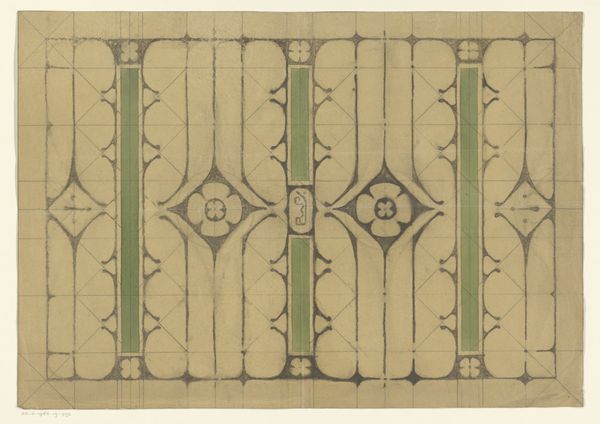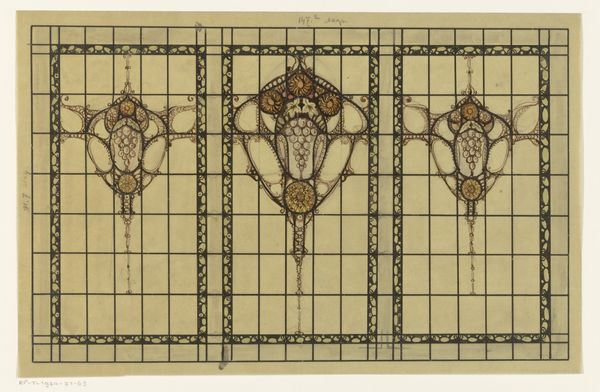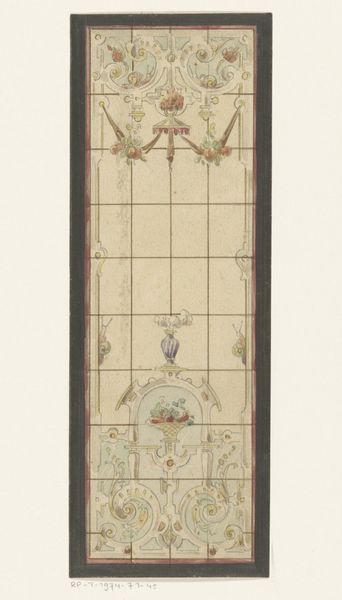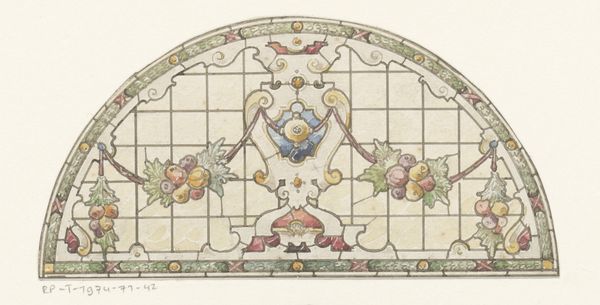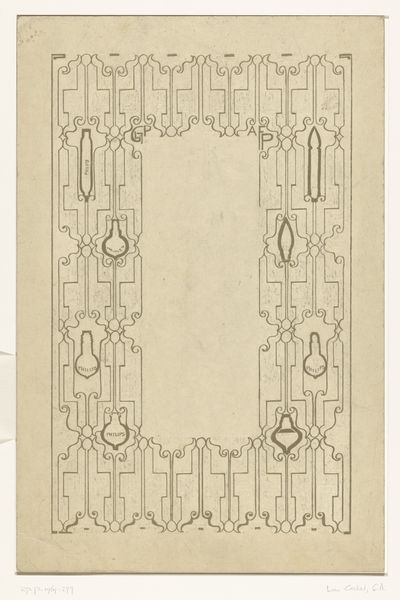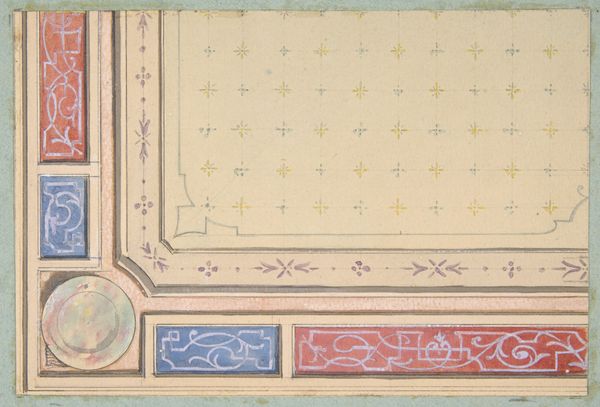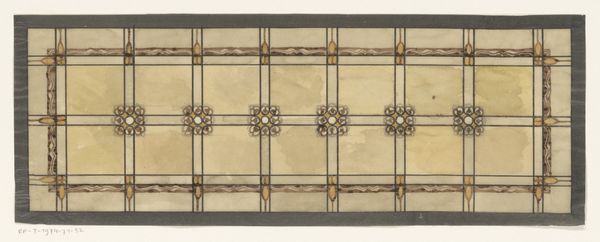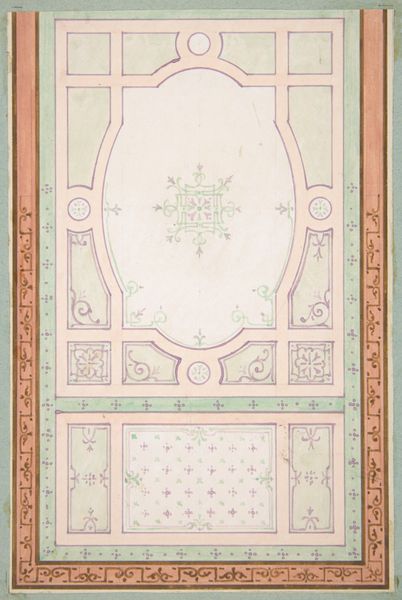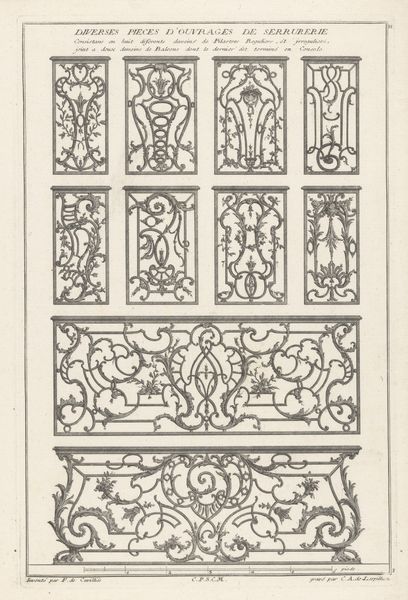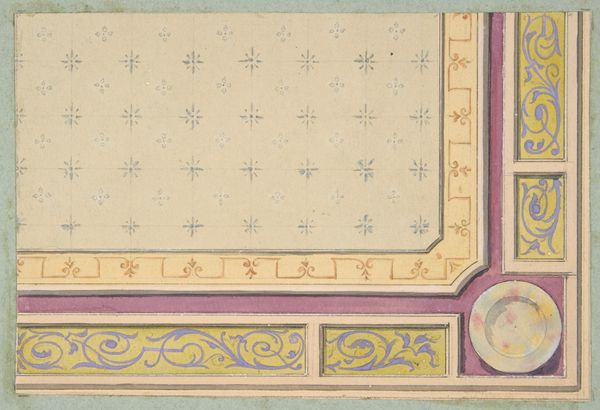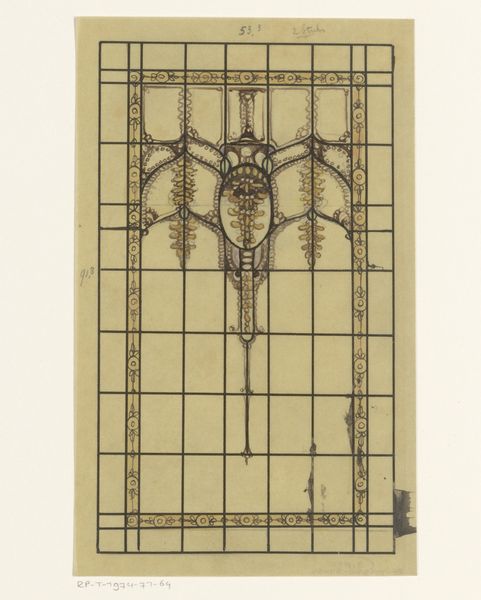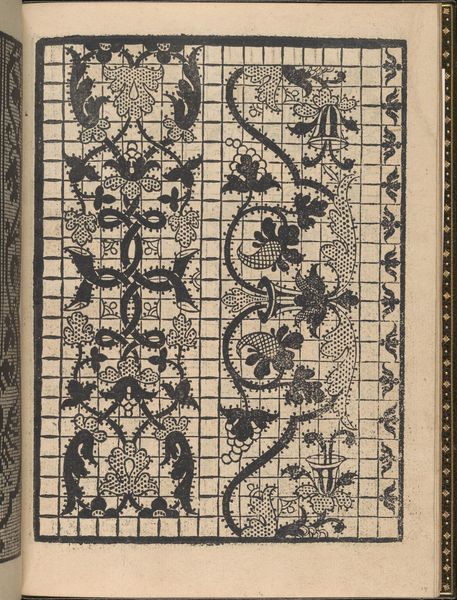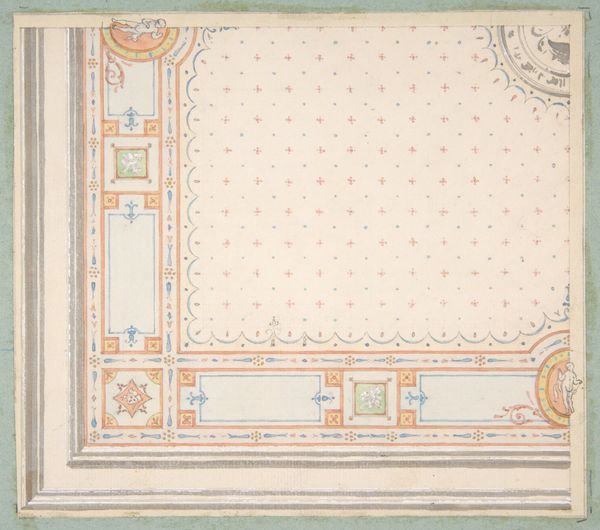
drawing, ornament, stain
#
drawing
#
natural stone pattern
#
ornament
#
art-nouveau
#
stain
#
collage layering style
#
pattern making
#
geometric pattern
#
hand-embroidered
#
pattern background
#
pattern design
#
geometric
#
fabric design
#
pattern repetition
#
layered pattern
Dimensions: height 267 mm, width 138 mm
Copyright: Rijks Museum: Open Domain
Curator: This work is titled "Ontwerp voor een glas in loodraam met bloem- en bladornamenten", which translates to "Design for a stained glass window with floral and foliate ornaments." It was created after 1907 by an anonymous artist. Editor: It strikes me as both delicate and quite formal. The symmetry and geometric grid give it a rigid structure, yet the floral motifs soften the overall effect. There's a yearning for something organic amidst all the straight lines. Curator: Indeed, the rigid grid imposed on organic shapes makes for a fascinating tension. This push-pull can be seen as reflecting a broader societal tension in the early 20th century between the industrial age and a yearning for the natural world, the past, especially by way of styles like Art Nouveau. Editor: Looking at the symbolism, flowers and foliage have consistently represented themes of growth, beauty, and the ephemeral nature of life in Western art. I wonder if this particular artist drew on established floral symbol dictionaries? Those gem-like shapes scattered through the piece are interesting too, do you think that they might be playing at some reference to jewelry, thus luxury and possibly status? Curator: That's a keen observation. I would point to how Art Nouveau drew inspiration from Japanese art with its emphasis on decorative, stylized natural forms. The plants depicted also become metaphors for the relationship between nature and design, questioning the values placed upon those dichotomies by class differences. How the window uses ornament to democratize its message, placing the potential of beauty for all to enjoy, perhaps. Editor: It’s subtle, isn't it? The image walks a tightrope between pure decoration and symbolic meaning, and what it all says about humanity’s role in nature. Thanks for helping me consider that! Curator: And thank you. Examining these pieces, we get to see how deeply human experiences have remained, as filtered through cultural trends.
Comments
No comments
Be the first to comment and join the conversation on the ultimate creative platform.
